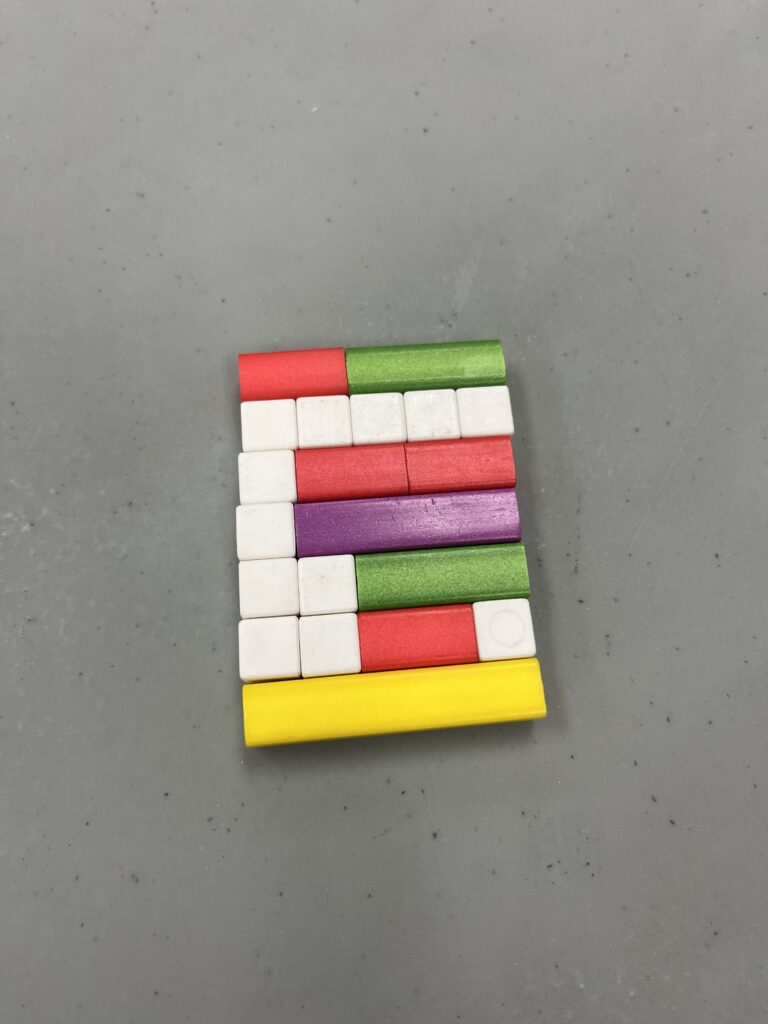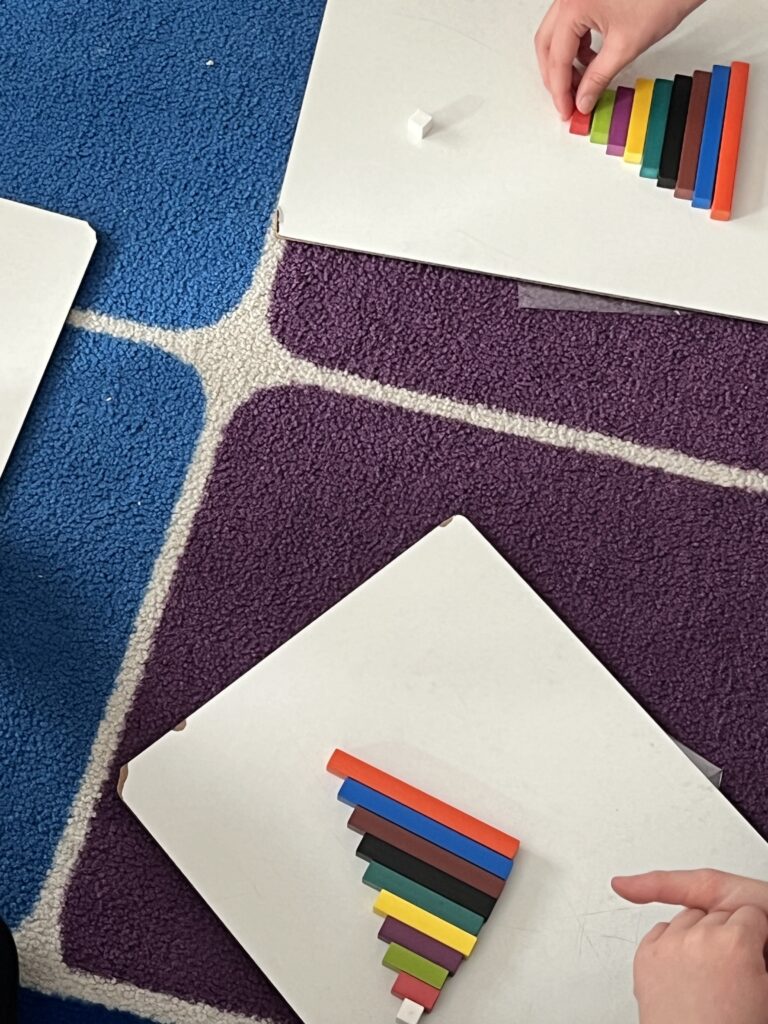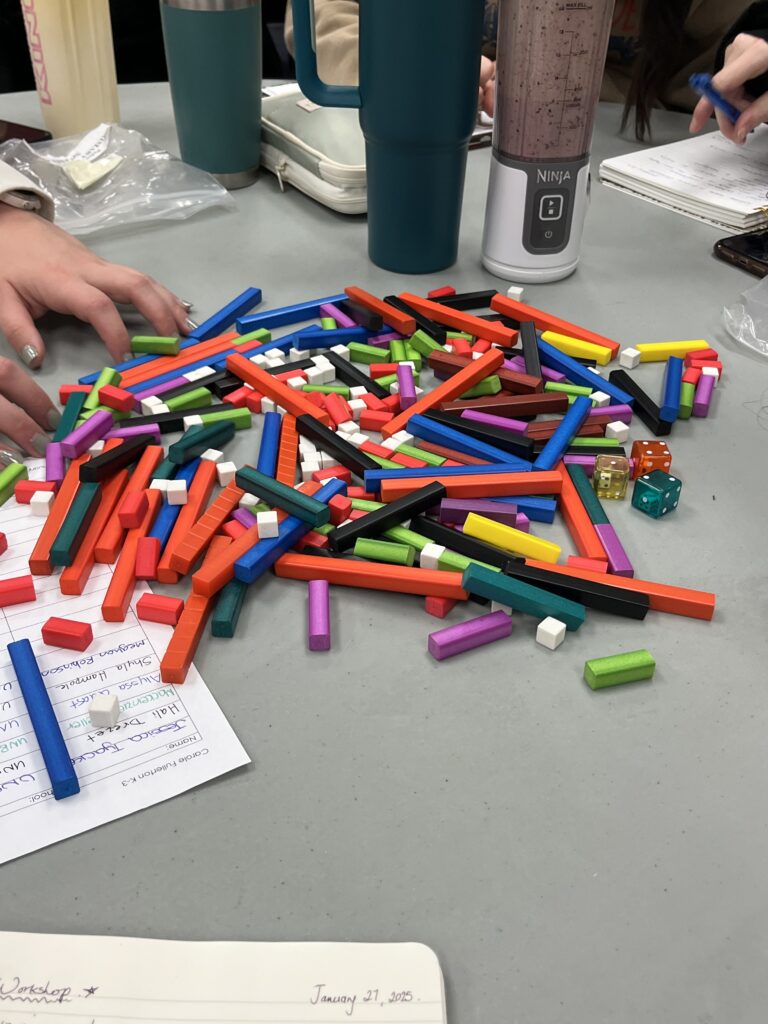Carole Fullerton’s workshop on Cuisenaire rods introduced a range of ways to use manipulative tools for teaching various mathematical concepts, including counting, patterns, addition, subtraction, multiplication, division, fractions, and even geometry. As someone who did not always use manipulatives, especially as I got into the more intermediate grades, I found this workshop particularly useful.
Reflecting on My Math Experience
When I was younger (primary), manipulatives were a regular part of learning math. However, as I progressed into the intermediate grades, I noticed that math manipulatives like Cuisenaire rods were not used much in the classroom. Most of the math I encountered was abstract, focusing on memorization and formulas. For concepts like multiplication and division, I did not have a hands-on way to visualize or connect the numbers. If I had been introduced to something like Cuisenaire rods during those years, I think it would have made a huge difference in my understanding and confidence with math.
The idea of using the rods to make math more concrete and visible is something I now see as a big benefit. Instead of just memorizing equations, you can physically manipulate the rods to model how numbers work together. Looking back, I realize how this could have made abstract concepts easier to grasp and more engaging, helping me build a stronger foundation in math.
Challenges with Associating Numbers and Colours
During the workshop, one of the challenges I faced was connecting the numbers to their corresponding colours. For example, the number 1 is represented by a white block, while 10 is represented by an orange rod. I have always processed math in a more abstract/formulaic way, so it was a bit difficult for me to immediately link the colours with the numbers. Although it felt uncomfortable at first, I can see how this visual approach can be helpful for students who struggle with abstract reasoning.
While this method challenged the way I normally think about math, I can see its value in helping students understand how numbers relate to one another in a concrete, visual way.

Adaptability of Cuisenaire Rods for Older Grades
One of the key takeaways from the workshop was realizing how adaptable Cuisenaire rods are for all grade levels, not just for younger students. These rods can be used in advanced ways to teach older students, too. For example, they can help with understanding fractions, multiplication, and division in a way that makes abstract concepts more approachable. The rods also provide a concrete way to explore geometric concepts like area and perimeter. The fact that these manipulatives are versatile and can be used throughout different stages of learning means they can continue to support students as they encounter more complex topics in math.
Observing a Cuisinaire Rod Lesson in Action

During my practicum, I was given the opportunity to observe my coaching teacher facilitate a Cuisenaire rod lesson with Kindergarten and Grade 1 students. In less than an hour, the students were able to recall the number and colour of each rod. It was impressive to see how quickly they learned to associate the colours with the numbers. It showed how effective this method can be for helping young students grasp math concepts.
Research supports how visual aids like Cuisenaire rods can help young children understand abstract ideas. These tools engage multiple senses, making it easier for students to remember what they have learned. Watching the students quickly pick up on the lesson was a reminder of how valuable these types of hands-on learning experiences can be.
Carole Fullerton’s workshop gave me a fresh perspective on teaching math. Cuisenaire rods are a great tool for helping students of all ages understand abstract concepts in a more concrete way.
